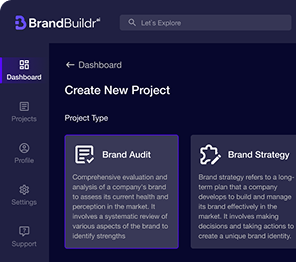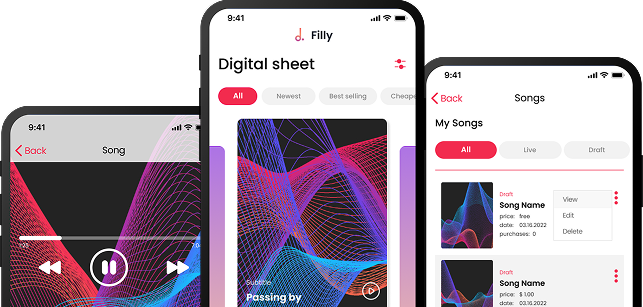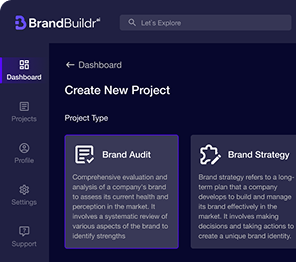A custom enterprise software application is a specialized digital solution designed exclusively for your business needs. Investing in tailored technology solutions can significantly boost operational performance. Unlike standard ready-made products, customised software is developed to fit your operations and processes — allowing your business to stay in control, rather than adapting to the limitations of generic tools. This article explores the key benefits of custom software, demonstrating why it's a worthwhile investment for businesses seeking long-term success.

Codebridge: Crafting Custom Software for Business Excellence
Codebridge is a leading custom software development company dedicated to building scalable digital solutions for businesses worldwide. With a focus on delivering high-quality, tailored software, Codebridge helps organizations optimize their operations, enhance customer experiences, and achieve their strategic goals. Since its inception, Codebridge has successfully completed over 600 projects, establishing a proven track record of delivering impactful results.
Expertise in Scalable Digital Solutions
Codebridge specializes in crafting scalable digital solutions across various domains, including UI/UX design, web and mobile applications, and cloud solutions. Our team of experienced developers, designers, and project managers work closely with clients to understand their unique requirements and develop software that addresses their specific challenges. Whether it's building a new e-commerce platform, developing a custom CRM system, or migrating to the cloud, Codebridge has the expertise to deliver innovative and effective solutions.
Serving North America and Western Europe
Codebridge primarily serves clients in North America and Western Europe, regions known for their high standards and demanding business environments. By focusing on these markets, Codebridge has developed a deep understanding of the specific needs and challenges faced by businesses in these regions. They are committed to providing exceptional service and delivering solutions that meet the highest standards of quality and reliability.
Tailored Solutions for Personalized Operational Alignment
Off-the-shelf software is designed to cater to a broad audience, which means it often includes features that are irrelevant to your specific business processes, while lacking others that are essential. Custom business software, on the other hand, is built from the ground up to perfectly align with your unique operational needs. According to a McKinsey report, companies focusing on strategic technology investments achieve 20% higher revenue growth.
According to a McKinsey report, companies focusing on strategic technology investments achieve 20% higher revenue growth.
This tailored approach ensures that the software fits seamlessly into your existing workflows, eliminating the need for workarounds and maximizing efficiency.

Eliminating Redundancy
One of the key benefits of custom software is its ability to eliminate redundant steps in your business processes. By automating tasks and streamlining workflows, custom solutions can significantly reduce the time and effort required to complete various operations. This not only improves efficiency but also frees up employees to focus on more strategic and value-added activities.
Automating Key Tasks
Custom software can automate a wide range of key tasks, from data entry and reporting to customer communication and order processing. This automation not only saves time and resources but also reduces the risk of human error, leading to more accurate and reliable results. According to recent studies, businesses that implement custom software solutions can reduce task completion times by as much as 35%.
Imagine a small manufacturing company struggling to manage its inventory using a combination of spreadsheets and manual processes. By implementing a custom business software solution, the company could automate inventory tracking, order fulfillment, and shipping, resulting in significant time savings, reduced errors, and improved customer satisfaction. This personalized alignment with their specific needs would provide a considerable advantage over relying on generic, off-the-shelf inventory management software.
Achieving Long-Term Financial Gains with Custom Software
While the initial investment in custom business software may seem higher than purchasing off-the-shelf solutions, the long-term financial benefits can be substantial. Custom software offers superior ROI by streamlining operations, reducing technical debt, and providing a platform for future growth.

Reducing Technical Debt
Technical debt refers to the implied cost of rework caused by choosing an easy solution now instead of using a better approach that would take longer. Off-the-shelf software often introduces technical debt due to its generic nature and the need for customizations or workarounds to fit specific business needs. Custom software, on the other hand, is designed to meet your exact requirements from the outset, minimizing the need for future rework and reducing technical debt.
Maximizing Return on Investment
A Forrester study indicates that businesses can recoup their investment in custom business software within 18-24 months through operational efficiencies and reduced technical debt. This rapid ROI is driven by the ability of custom solutions to automate tasks, streamline workflows, and improve decision-making. Furthermore, the modular architecture of custom software allows for easier upgrades and modifications, avoiding the costly reimplementation often associated with commercial platforms. This ensures that your software remains relevant and effective over the long term, maximizing your return on investment.

Innovation and Market Leadership Through Bespoke Software
In today's competitive market, innovation is essential for survival. Custom business software empowers businesses to innovate and differentiate themselves by providing a platform for developing unique capabilities and processes. Bespoke software serves as both an operational tool and a source of intellectual property, giving businesses a competitive edge.
Creating a Competitive Edge
By developing custom software that addresses their specific needs and challenges, businesses can create a competitive edge that is difficult for competitors to replicate. This can lead to increased market share, improved customer loyalty, and higher profitability. According to industry analysts, industry leaders consider custom development essential for maintaining market leadership.
Building Proprietary Solutions
Custom business software allows businesses to build proprietary solutions that are tailored to their unique requirements and processes. These solutions can become valuable assets, providing a sustainable competitive advantage.
For example, Maersk Line, the world's largest container shipping company, developed a custom software platform called "Captain Peter" to optimize its vessel operations. This platform uses advanced algorithms to analyze various factors, such as weather conditions, fuel consumption, and port congestion, to determine the most efficient routes and schedules. By leveraging this custom software, Maersk Line has been able to significantly reduce its operating costs and improve its on-time performance, achieving market differentiation through innovation.
Scalability and Flexibility for Future Growth
As businesses grow and evolve, their software needs to adapt accordingly. Custom business software offers superior scalability and flexibility compared to off-the-shelf solutions, allowing businesses to easily accommodate changing market demands and new opportunities.
Adapting to Changing Market Demands
One of the key advantages of custom software is its ability to adapt to changing market demands. Whether it's adding new features, integrating with other systems, or scaling to handle increased traffic, custom solutions can be easily modified to meet evolving business needs. This flexibility ensures that your software remains relevant and effective over the long term.
Cost-Effective Scaling Strategies
Cloud-native custom solutions offer unprecedented elasticity, allowing businesses to scale their software resources up or down as needed. Microservices architectures, where applications are built as a collection of small, independent services, further enhance scalability and flexibility. For example, Netflix uses a microservices architecture to handle its massive streaming traffic, allowing it to scale its services independently and efficiently. This contrasts sharply with the limitations of monolithic commercial platforms, which can be difficult and expensive to scale. To learn more about building scalable solutions, check out this article.

Strengthening Your Security Posture with Custom-Built Systems
Security is a paramount concern for businesses of all sizes. Custom business software offers enhanced security benefits compared to off-the-shelf solutions, reducing the risk of cyberattacks and protecting sensitive data.
Reducing Vulnerabilities
Off-the-shelf software is often targeted by hackers due to its widespread use and well-known vulnerabilities. Custom-built systems, on the other hand, have a smaller attack surface, making them less attractive targets for cybercriminals. By developing your own software, you can also implement proprietary security protocols and controls, further reducing the risk of security breaches.
Implementing Advanced Security Measures
Custom business software allows you to implement advanced security measures that are tailored to your specific needs and risk profile. This can include features such as multi-factor authentication (MFA) using biometric data, end-to-end data encryption using AES-256 or similar algorithms, and real-time intrusion detection systems that leverage machine learning to identify and respond to anomalous activity. For financial institutions, custom software can provide the enhanced security required to protect sensitive customer data and comply with strict regulatory requirements like PCI DSS. IBM Security data suggests that breaches cost companies on average $4.45 million in 2023 and predicts a rise in attacks by 2025, making custom security measures more crucial than ever.
Compliance and Regulatory Requirements
Certain industries have strict compliance and regulatory requirements regarding data security and privacy. Custom business software can be designed to meet these specific requirements, ensuring that your business remains compliant and avoids costly penalties. For example, healthcare providers must comply with HIPAA regulations, while businesses operating in the European Union must adhere to GDPR. Custom software can be tailored to meet these specific requirements, ensuring data privacy and security.
Enhancing Digital Marketing with SEO-Optimized Custom Platforms
Custom business software can be leveraged to improve digital marketing efforts by providing a platform for creating personalized customer experiences and improving organic search rankings.
Personalized Customer Experiences
By integrating customer data and analytics into your custom software, you can create personalized customer experiences that drive engagement and loyalty. This can include features such as personalized product recommendations, targeted marketing campaigns, and customized content delivery.
Improving Organic Search Rankings
Custom business software can be used to build custom CMS platforms with built-in semantic analysis engines that improve organic search rankings. These platforms can analyze content and suggest optimizations that make it more relevant to search engines, leading to higher rankings and increased traffic. Studies show that SEO-optimized articles lead to higher engagement. To find the best software development partner for your business, read this article.
Agile Development for Rapid Iteration and Continuous Improvement
Agile development is a software development methodology that emphasizes iterative development, collaboration, and continuous feedback. This approach is particularly well-suited for custom business software projects, as it allows for rapid iteration and continuous improvement based on user feedback and changing business needs.
Iterative Development Cycles
Agile development involves breaking down a project into small, manageable iterations, each of which results in a working version of the software. This allows for frequent testing and feedback, ensuring that the software meets the needs of the users and stakeholders.
Continuous Feedback and Improvement
Agile development emphasizes continuous feedback and improvement, with regular reviews and retrospectives to identify areas for improvement. This ensures that the software is constantly evolving to meet the changing needs of the business. Scaled agile frameworks (SAFe) and continuous integration pipelines further enhance the efficiency and effectiveness of agile development. For example, Walmart implemented an agile methodology for its custom inventory management system. By using two-week sprints and holding daily stand-up meetings, the development team was able to quickly respond to feedback from store managers and adapt the system to meet their evolving needs. This resulted in a more efficient and user-friendly inventory management system that helped Walmart reduce stockouts and improve customer satisfaction.
Modernizing Legacy Systems for Enhanced Efficiency
Many businesses rely on legacy systems that are outdated and inefficient. Custom business software can help businesses modernize these systems and integrate them with newer technologies, improving efficiency and reducing costs.
API Integration Strategies
One approach to modernizing legacy systems is to use API gateways to integrate them with newer applications. This allows businesses to leverage the functionality of their legacy systems without having to completely replace them.
Minimizing Disruption During Modernization
Phased migration strategies can minimize disruption during the modernization process. This involves gradually migrating functionality from the legacy system to the new system, allowing users to adapt to the changes over time. AIG successfully transitioned its policy administration systems by implementing a phased migration strategy that involved gradually migrating functionality from its legacy mainframe system to a new cloud-based platform. This allowed AIG to minimize disruption to its business operations and ensure a smooth transition for its employees. The transition resulted in a 30% reduction in processing time and a 20% reduction in IT costs.
Embracing AI-Driven Automation for Smarter Business Operations
Emerging trends in custom business software development are focused on the integration of AI to drive automation and improve business operations.
Self-Optimizing AI Cores
Self-optimizing AI cores can be integrated into custom software to enable dynamic reconfiguration of business processes. These AI cores can analyze data and automatically adjust the software to optimize performance and efficiency. For example, in a supply chain management system, an AI core could analyze demand forecasts, inventory levels, and transportation costs to automatically adjust production schedules and delivery routes, minimizing costs and maximizing efficiency. This could involve techniques like reinforcement learning to continuously improve decision-making over time.
Dynamic Reconfiguration of Business Processes
AI-driven automation can enable dynamic reconfiguration of business processes, allowing businesses to adapt quickly to changing market conditions and customer needs. This can lead to significant improvements in efficiency, productivity, and profitability. Yield improvements in manufacturing are just one example of the benefits of AI-driven automation. For instance, natural language processing (NLP) can be used to automate customer service interactions, allowing businesses to handle a higher volume of inquiries with fewer staff. Predictive analytics can also be used to identify potential problems before they occur, allowing businesses to take proactive steps to prevent disruptions.
Unlock Your Strategic Advantage with Custom Business Software
In conclusion, custom business software offers a transformative approach to software development, empowering businesses to optimize their operations, innovate, and achieve sustainable growth. By providing tailored solutions that align perfectly with unique business needs, custom software unlocks a strategic advantage that is difficult to replicate with off-the-shelf solutions.
Key Takeaways for Business Leaders
The key advantages of custom business software include:
- Personalized operational alignment
- Long-term financial gains
- Innovation and market leadership
- Scalability and flexibility
- Enhanced security
- Improved digital marketing
- Agile development and continuous improvement
- Modernization of legacy systems
- AI-driven automation
These advantages translate into faster decision cycles, cost reductions, and higher customer retention rates.
Partnering for Success
If you're ready to explore the transformative power of custom business software and unlock your strategic advantage, consider partnering with Codebridge. With our expertise in building scalable digital solutions and our proven track record of success, we can help you develop software that meets your specific needs and drives your business forward. Get a free consultation and discover how custom business software from Codebridge can revolutionize your business operations.
FAQ
How does custom business software give companies a strategic advantage?
Custom software aligns perfectly with a company’s workflows, goals, and competitive landscape. Unlike generic tools, it eliminates inefficiencies, boosts productivity, and supports unique business processes — giving companies an edge in speed, accuracy, and innovation.
Why is custom software more effective than off-the-shelf solutions?
Off-the-shelf tools offer generic features, while custom software is built to match specific operational needs. This leads to better integration, smoother workflows, and higher adoption rates. Custom solutions also scale more easily as the business grows and evolves.
What types of businesses benefit most from custom software development?
Companies with complex workflows, specialized services, or rapid growth benefit most. Industries such as logistics, finance, healthcare, retail, and manufacturing often require custom systems for automation, reporting, compliance, and customer-facing applications.
How does custom software improve operational efficiency?
By automating repetitive tasks, centralizing data, and integrating multiple systems, custom software reduces human error and speeds up processes. This results in faster decision-making, reduced costs, and improved team productivity across departments.
What role does scalability play in the strategic value of custom software?
Scalability ensures the software can grow with the business — adding new users, features, or integrations without performance issues. This flexibility allows companies to adapt quickly to market changes and avoid expensive rebuilds in the future.
How can businesses ensure successful development of custom software?
Success depends on clear requirements, strong communication with developers, agile project management, and continuous testing. Choosing an experienced development partner and prioritizing user feedback also ensures the final product meets business goals and delivers long-term value.
Heading 1
Heading 2
Heading 3
Heading 4
Heading 5
Heading 6
Lorem ipsum dolor sit amet, consectetur adipiscing elit, sed do eiusmod tempor incididunt ut labore et dolore magna aliqua. Ut enim ad minim veniam, quis nostrud exercitation ullamco laboris nisi ut aliquip ex ea commodo consequat. Duis aute irure dolor in reprehenderit in voluptate velit esse cillum dolore eu fugiat nulla pariatur.
Block quote
Ordered list
- Item 1
- Item 2
- Item 3
Unordered list
- Item A
- Item B
- Item C
Bold text
Emphasis
Superscript
Subscript





















.avif)



.avif)

.avif)


